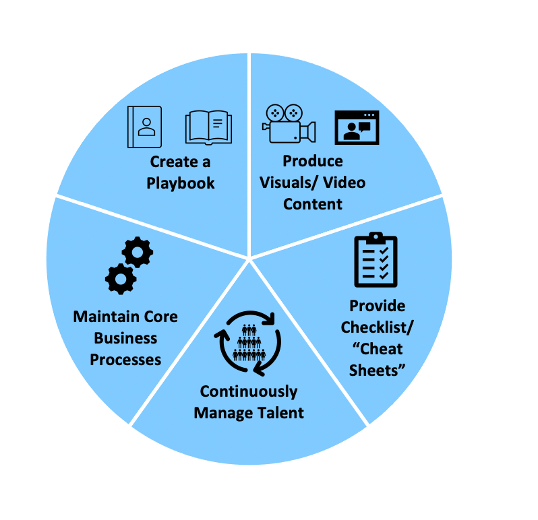Many Professional Service (PS) Businesses have taken a page from product manufacturing’s cost reduction book and “leaned out” their inventory. In the case of PS businesses, the inventory being referred to and leaned-out is Talent capacity and by default capability. The result is having to do more just-in-time (JIT) hiring and deployment to meet client program/project demand. And while those that have taken this action may have obtained some financial gains, we believe most PS businesses did not also implement a corresponding JIT business/operating model to ensure additional gains are achieved and client obligations are met efficiently.
It is very difficult to manage staffing capacity – and capability – in this JIT model, and you likely find yourselves understaffed and operationally inefficient during peaks in demand. Therefore, leveraging JIT talent can lead to two challenges without having a corresponding operating model.
1. Delivery Excellence – As you know, PS Businesses strive for efficient program and project delivery (i.e., the mantra is to be ahead of time and under budget) because delays significantly affect the client’s time to value and target outcomes. In turn, the reputational and financial risk of sub-par performance to a PS Business is extremely high and significantly impacts its future success.
Subcontracting talent on a just-in-time basis can increase risk and costs on a business that is already margin constrained. Why? Even though billable utilization remains high for your employed core staff, reliance on JIT staffing limits program and project teams’ ability to readily meet demand and achieve delivery excellence, which increases “hidden” costs such as:
-
- Important “tribal knowledge”, IP and expertise leaving after each project.
- Onboarding and teaming issues and elongated time to productivity (i.e., longer storming and norming period).
- Needing to re-do work even though projects are similar – and repeatable – from client to client.
2. Financial Performance – Naturally, a PS Business’ near-term financial performance is negatively impacted via inefficient delivery. Longer term financial performance is also negatively impacted as:
-
- Fewer clients are referenceable should client delivery decline (see #1 above).
- Traditional PS leveraged talent pyramids are no longer in use; you may have an upside-down pyramid as your remaining employed billable staff is likely very experienced and therefore highly compensated SMEs and when their billable utilization is 90+% your organization loses their ability to focus on client management and upselling/account expansion.
- Ultimately, the billable utilization targets are high since there is not enough bench strength (i.e., capacity); the cycle of contracting/releasing Talent keeps utilization high but puts overall performance at risk (i.e., high billable utilization is a “false positive”).
Overcoming the Dilemma
Please note we are not advocating against JIT Talent. Rather, it can be highly effective given a corresponding model to operationalize and optimize it. We believe the best way to overcome the obstacles listed above is by adapting what we are calling a “factory model”. A factory is defined as “a person, group, or institution that continually produces a great quantity of something specified”.
Being factory-like infuses repeatability, configurability, consistency, and predictability into what is inherently dynamic to a PS Business. Therefore, having a successful JIT Talent model requires implementing a corresponding factory model with defined standards, tools, methods, and processes. An important note – you will need to have the ability to reconfigure the factory as needed to meet the specific needs of both your business and clients. Therefore, a configurable PS Factory model includes:
-
- Creating Playbooks: Organize and document Service offers into playbooks to provide a clear plan for how the delivery teams will operate, stay focused, be organized, remain accountable, and get things done.
- Making Visuals/ Video Content: Make them available on-demand to enable JIT delivery resources to obtain key project delivery refreshers in real time.
- Providing Checklists and “Cheat Sheets”: To be easily accessed and leveraged.
- Continuously Managing the JIT Talent Pipeline: To be done while forecasting client demand.
- Maintaining Core Business Processes: To enable and support the model; may include PSA application, Project management, Pricing/ cost models, etc.

The factory foundation is the first step to delivering optimal results to you and your client time and time again. In our next blog, we will discuss “how” a PS Businesses should implement a factory model, examples of how it can work in your business and the best approach.
Written by: Mark Slotnik
About the Author:
Mark Slotnik has spent nearly 20+ years advising clients in the areas of designing and taking to market high-value business solutions, solution portfolio management, talent development, resource management, business process re-engineering and commercial software.
